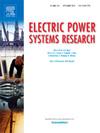Standardized pollution formulations for high-voltage insulators and their electrical characterization
IF 4.2
3区 工程技术
Q2 ENGINEERING, ELECTRICAL & ELECTRONIC
引用次数: 0
Abstract
Leakage current analysis is commonly used to assess surface contamination on high voltage insulators, but conventional metrics such as ESDD and NSDD lack real-time diagnostic capabilities. This study introduces standardized artificial pollution formulations based on IEC 60507 and IEC 60815 severity levels, aiming to improve test repeatability. The formulations were applied using controlled deposition methods, and their effects were evaluated through leakage current and impedance spectroscopy from 1 Hz to 1 MHz. A strong correlation () between NaCl mass and ESDD was established. Polluted specimens showed significant impedance reduction—from 1 T to the M range—highlighting the sensitivity of electrical response to contamination. The findings support impedance spectroscopy as a complementary diagnostic tool and reinforce its potential for automated classification and predictive maintenance in polluted environments.

高压绝缘子及其电气特性的标准化污染配方
泄漏电流分析通常用于评估高压绝缘子的表面污染,但传统的测量方法如ESDD和NSDD缺乏实时诊断能力。本研究引入了基于IEC 60507和IEC 60815严重等级的标准化人工污染配方,旨在提高测试的可重复性。采用控制沉积的方法,通过1 Hz ~ 1 MHz范围内的漏电流和阻抗谱来评价配方的效果。NaCl质量与ESDD呈正相关(R=0.996)。受污染的样品显示出显著的阻抗降低-从1 TΩ到MΩ范围-突出了电响应对污染的敏感性。研究结果支持阻抗谱作为一种辅助诊断工具,并增强了其在污染环境中自动分类和预测性维护的潜力。
本文章由计算机程序翻译,如有差异,请以英文原文为准。
求助全文
约1分钟内获得全文
求助全文
来源期刊

Electric Power Systems Research
工程技术-工程:电子与电气
CiteScore
7.50
自引率
17.90%
发文量
963
审稿时长
3.8 months
期刊介绍:
Electric Power Systems Research is an international medium for the publication of original papers concerned with the generation, transmission, distribution and utilization of electrical energy. The journal aims at presenting important results of work in this field, whether in the form of applied research, development of new procedures or components, orginal application of existing knowledge or new designapproaches. The scope of Electric Power Systems Research is broad, encompassing all aspects of electric power systems. The following list of topics is not intended to be exhaustive, but rather to indicate topics that fall within the journal purview.
• Generation techniques ranging from advances in conventional electromechanical methods, through nuclear power generation, to renewable energy generation.
• Transmission, spanning the broad area from UHV (ac and dc) to network operation and protection, line routing and design.
• Substation work: equipment design, protection and control systems.
• Distribution techniques, equipment development, and smart grids.
• The utilization area from energy efficiency to distributed load levelling techniques.
• Systems studies including control techniques, planning, optimization methods, stability, security assessment and insulation coordination.
 求助内容:
求助内容: 应助结果提醒方式:
应助结果提醒方式:


